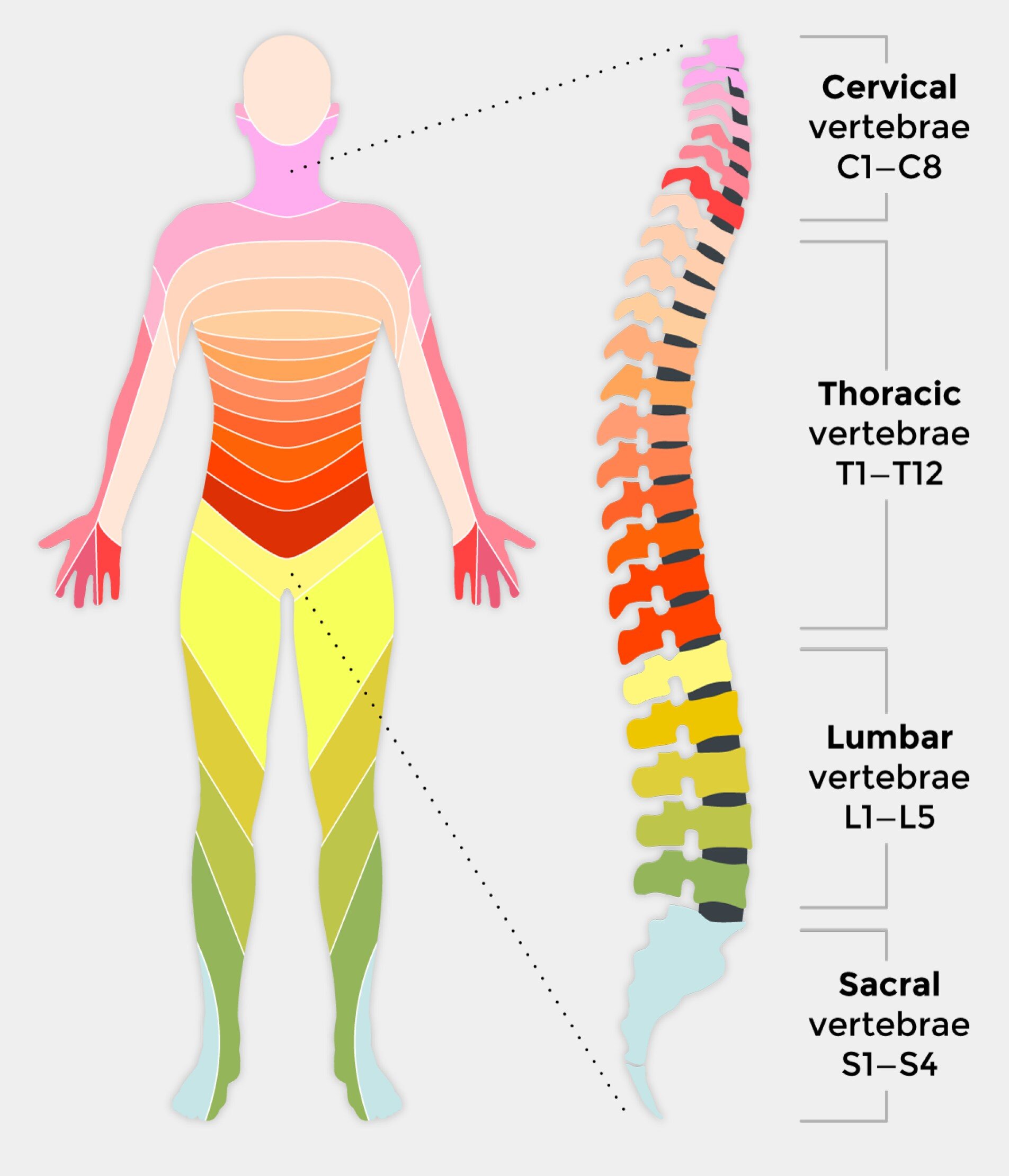



Spinal Cord Injuries
Damage to the spinal cord can happen for many different reasons. It may be caused by direct trauma, inflammation, infection, genetics, a tumor, or an auto-immune process, to name a few possible causes. Spinal cord injuries may happen at any level in the spinal column and may cause different amounts of damage. The spinal cord carries different types of nerves that carry motor signals, which send signals to muscles, and various types of sensory information, such as light touch, pain, and temperature. The spinal cord is organized such that the different types of nerves are located together in different parts of the spinal cord. Because of this, spinal cord injuries may affect motor nerves controlling muscles or sensory nerves, which control different types of senses (pain, temperature, vibration, or light touch).
Cervical Injuries.
Cervical spinal cord injuries are those that happen in the neck, or cervical, spine. Injuries at this level may affect function in both the arms and legs.
Lumbar Injuries.
Lumbar spinal cord injuries are those that happen in the low back, or lumbar, spine. Injuries at this level will typically affect the function in the legs.
Complications.
There are many complications that may result from spinal cord injuries. Injuries higher up in the neck may affect the nerves which control the diaphragm, causing difficulty with breathing.

